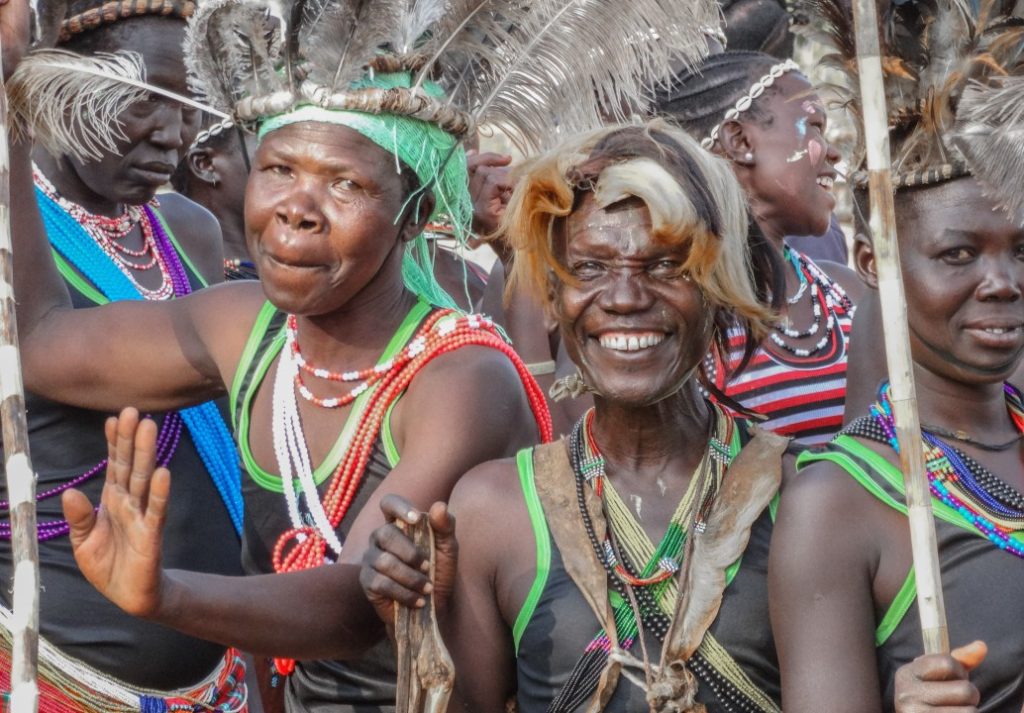
The protected area is located in Karamoja sub region north of Mount Elgon National park north eastern part of Uganda in Nakapiripirit district. Pian Upe wildlife reserve covers an area of 2275 sq km that consists of mountains,rocks and rivers. Previously Pian Upe was a conservation area and a battleground for the Karamojong pastoral group, that is to say those from Northern Uganda and those from Pokot Kenya. These groups raided one another however peace was restored in the place and tourism was introduced so that the communities benefit.
In 1958 the southern part of the reserve was gazetted as Debasien animal sanctuary and the government had established agricultural produce in the southern banks of River Girik. However the wildlife reserve continued to be threatened, this hard pressed the government and the reserve was expanded northwards. The reserve was later renamed Pian Upe meaning “friendly enemies”. The protected area is managed by the Mount Elgon conservation department. The management consists of other protected areas namely Mount Elgon National park, Matheniko game reserve and Bokora wildlife reserve. The reserve is connected to Matheniko game reserve by the Bokora corridor.
Flora in Pian Upe Wildlife Reserve
Pian Upe is dominated by wooden savannah plains that are surrounded by mountains that also cut between rocks-strewn ridges and kopjes, plateau and seasonal rivers. The reserve has short trees and shrubs, beard grasses, lemon grasses, demon grasses among others. The reserve plains are covered by red acacia and shrubs like butterfly pea, bush willows and desert date.
Fauna in Pian Upe Wildlife Reserve
Pian Upe wildlife reserve is known for harboring a quite number of rare animals that are found nowhere in Uganda. These may include cheetahs, roan antelopes, patas monkeys, crested porcupine, rock hyrax, aardvarks and four toed HedgeHogs. Others are predators which include jackals, wildcats, spotted hyenas, serval cats, civets, leopards and lions. However leopards and lions usually move between Amudat wildlife reserve and Pian Upe wildlife reserve.
The reserve is also a home to large herds of animals like hartebeest, zebra, common eland, oribi, cape buffalo, Gunther’s DikDik, blue and common duiker. Waterbuck, Uganda kob, Bohor, mountain reedbuck, klipspringer and impalas that were relocated from lake Mburo National park. There are also reptiles in the reserve these include, savannah monitors, chameleons, common Agama, crocodiles, geckos, rock pythons and venomous puff adders. All these mammals can be spotted during nature walks and morning or evening game drives.
Activities that can be done in Pian Upe Wildlife Reserve
Cultural tours

There are two tribes that live near Pian Upe wildlife reserve. These are Karamajongs and Kalenjin. The Karamajongs are similar to the Masai of Kenya and Tanzania. Whereas the Kalenji originated from the Pokot tribe in kenya. However all these two originate from the Karamajong pastoralists community. They are among the tribes in Uganda who are still authentic in their culture and traditions. On cultural tours you get a chance to interact with locals and learn their culture and tradition, taste their local dishes, enjoy marriage ceremonies, learn their political practices, way of living and enjoy their dance and drama performance by the locals most especially the Endonga dance. You can also participate in their performances incase your interested.
Bird watching
Pian Upe wildlife reserve is a home to a variety of different bird species. The reserve’s ecosystem has attracted unique birds from different parts making it a desired birding destination in uganda. Some of the birds include; ostrich, karamojong Apalis which are endemic to the north eastern region of the country. Other birds that are spotted during bird watching include Abyssinian hornbill, fox weaver bird, green pitta, secretary bird and rare shoebill stock.
Mountain hiking and guided nature walk
The reserve is surrounded by mountains and some of them include Mount Kadama, Mount Elgon and Napak. Hiking these mountains requires one to be physically fit and also offers a chance to explore the Napedet cave. This cave is known as an ancient recreation place that is believed to have been used by the early inhabitants of this area. The early inhabitants used to gather and engage themselves in painting according to their inspirations. Once you enter this cave there are old paintings of baboons, roan antelopes, hartebeests and giraffes.
Best time to visit Pian Upe Wildlife Reserve
Pian Upe wildlife reserve can be visited throughout the year however the best time is between the months of January and March when the vegetation is dry. During this time tourists have a clear view of animals when they are grazing and around the water resources during game drives. Also it’s when the management carries out controlled bush burning to keep grass short. During the months of November to December it is difficult to spot animals since they hide in the lush vegetation. Whereas in the months of April to October there is much rainfall making it hard to navigate the trails. Visitors are advised to use 4×4 vehicles so as to avoid inconveniences during weather changes.

 Posted in
Posted in 

